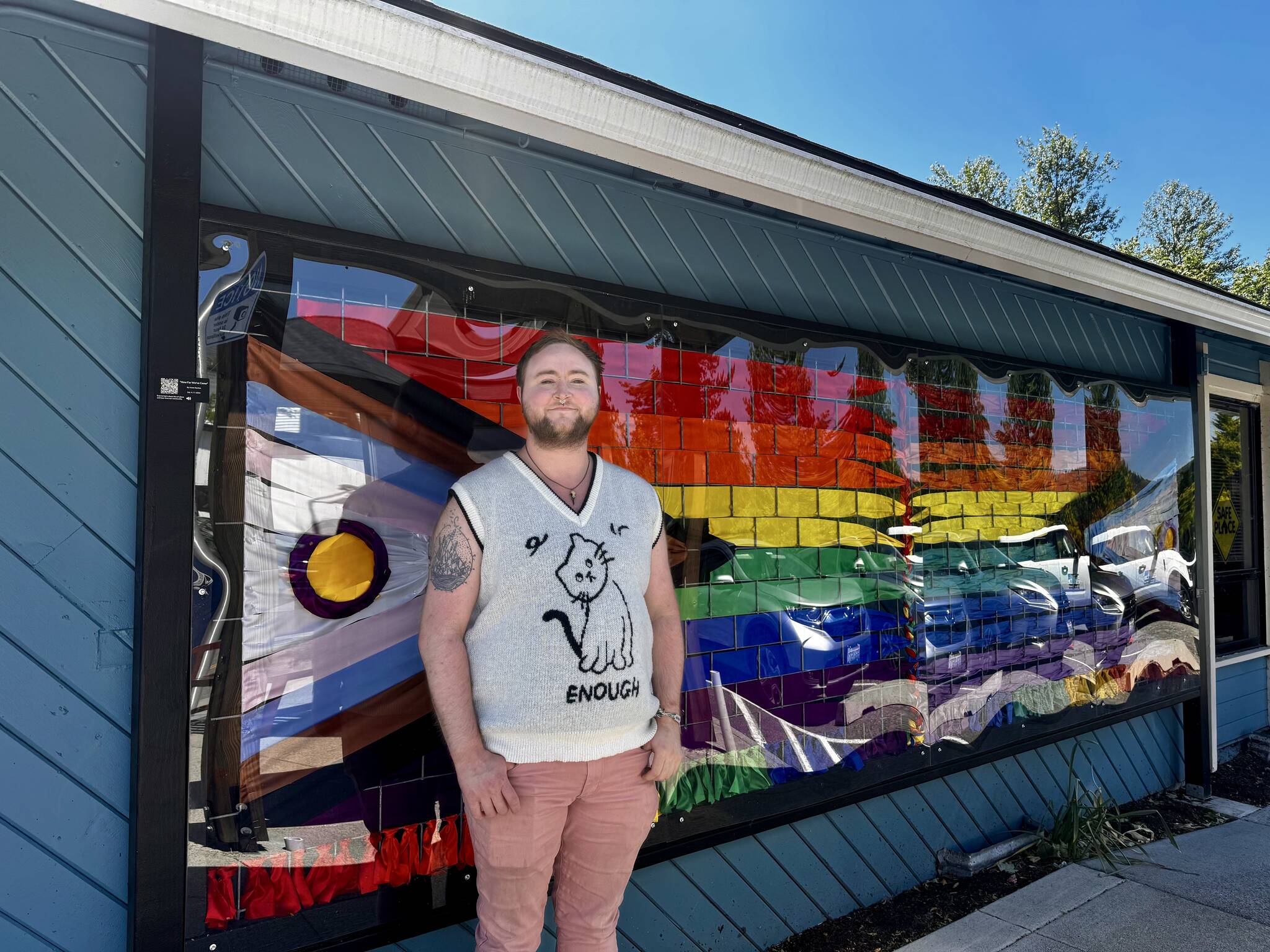By Grace Gorenflo, For the Valley Record
Axton Burton wasn’t sure they would ever feel comfortable returning to the Snoqualmie Valley after a traumatic adolescence growing up queer in Duvall.
Now, Burton’s Pride flag ribbon art stands proudly against an exterior wall of Duvall City Hall.
Burton, a local queer artist and 2SLGBTQIA+ activist, is the founder and executive director of Pride Across the Bridge, a nonprofit that provides resources for the Eastside’s LGBTQ+ community. Burton spent nearly a year working with Duvall city leaders to carry out their Pride flag project, after the city took down their previous installation amid controversy last year.
Burton’s first Duvall installation was in 2022 on the fence outside Valley Mail at the request of the store’s owner, Carol Kufeldt. Kufeldt said she mostly had people “telling me how much it meant to them and how they felt seen and how their kids felt safe.”
But there was a negative reaction to the art, too. Not long after they were installed, someone tore the ribbons down. Burton refreshed the art, but several other flags showed up on the fence, including white supremacist symbols. In July 2023, the city decided to remove everything until it could develop a code regarding the permitting of signage and art around town.
Cynthia McNabb, Duvall’s city administrator, personally took down the art outside Valley Mail, storing the ribbons in her office until everything was sorted.
“We were waiting to work through, in my mind, an inclusive and exhaustive democratic process,” she said. “I think it was really important to create a structure where it could be replaced in a reparative and supportive environment.”
Throughout the process, the Cultural Commission, which went dormant right before the pandemic, was revived. Both the commission and Duvall City Council sought public feedback before making recommendations and voting on the art, McNabb said. Burton was there throughout the 10-month process, attending all but two council meetings, and provided several recommendations for artist protections in the city’s new art policy.
Earlier this year, the city council voted 7-2 in favor of the installation.
“I’m extremely proud of Axton and their patience and their partnership in doing this project,” McNabb said. “It certainly started in a negative place, in a hurtful place, but Axton hung in there with the city.”
The new installation, called “How Far We’ve Come,” went up May 7 and uses 12 different ribbon colors to represent the Intersex-Inclusive Progress Pride flag. It has the original rainbow colors of the Pride flag, plus black and brown for people of color; pink, blue and white for the transgender community; and a purple circle on a yellow background for intersex individuals.
Burton has done similar installations in downtown Redmond for several years. Originally, there was no meaning to using ribbons, but getting a group together to refresh the ribbons on a yearly basis has become meaningful in itself, they said.
“How many opportunities do you, as a queer individual, have to point at a piece of art in your city and be like, ‘I did that’?” Burton said. “I also believe that the ribbons being the fragile things that they are speaks to the fragility of the human experience that we all unfortunately have to live.”
Kufeldt, who has joined Duvall City Council since this all began, said she fought for Burton’s work so people could have a “visual clue” that Duvall is a welcoming place.
“A lot of that community, because they’ve been marginalized for so long and demonized in some circles, having a visible symbol that welcomes them and makes them feel safe is so, so important,” she said. “It just adds an extra layer of, I’m OK here.”
And the symbol is working. McNabb, who started with the city in 2022, said seeing the original Pride art outside Valley Mail was one reason she applied for her job here and made accepting the position an easy decision. Burton has received other stories of the art’s impact — a Carnation elementary school teacher told Burton her class couldn’t stop talking about the art, some even crying tears of joy.
“It’s surreal,” Burton said. “The fact that art can touch people so much that they decide to work in a city, decide to move or stay in that city. And then elementary students from a town over have the ability to talk about that — it’s incredible.”


